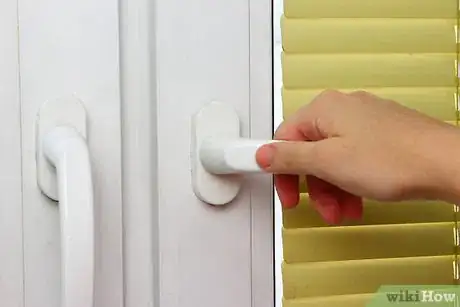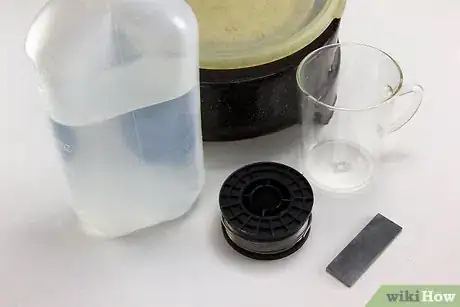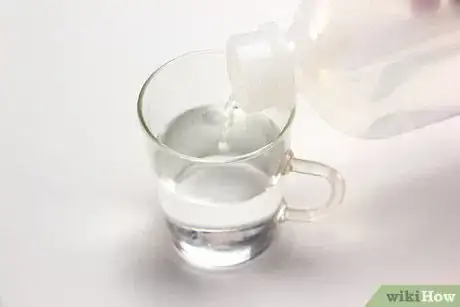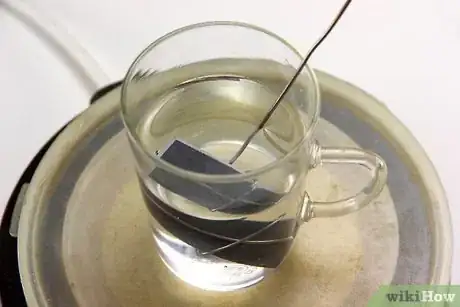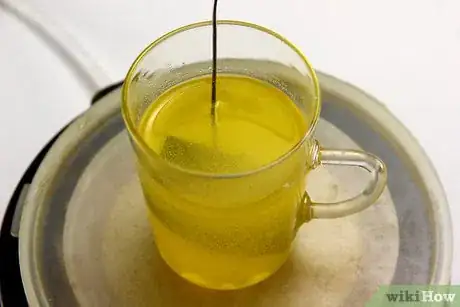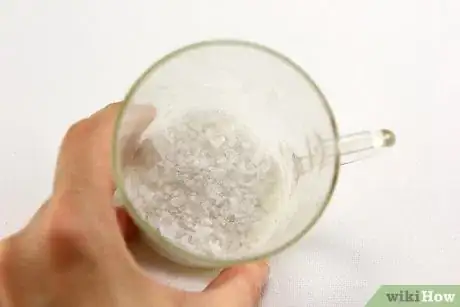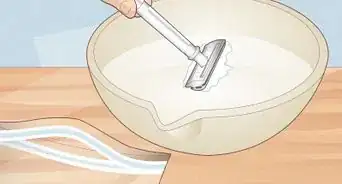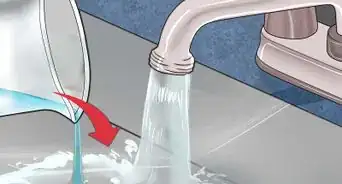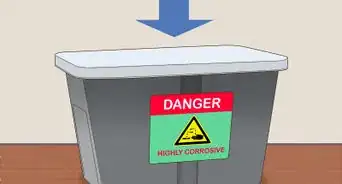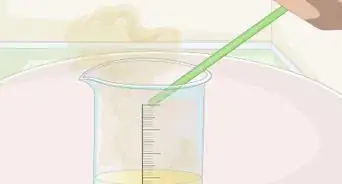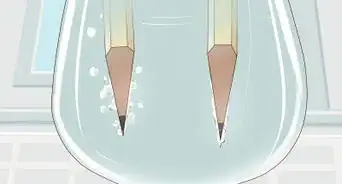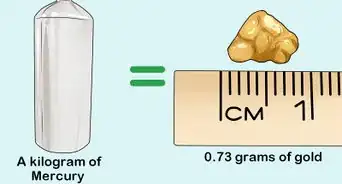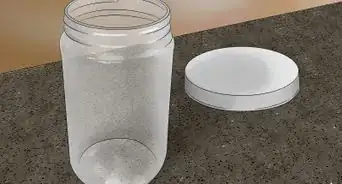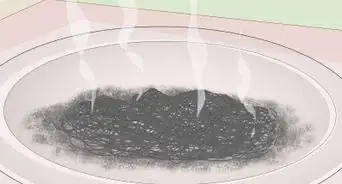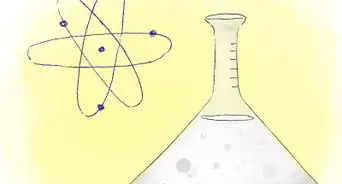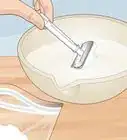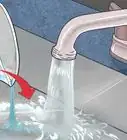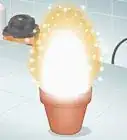This article was co-authored by Bess Ruff, MA. Bess Ruff is a Geography PhD student at Florida State University. She received her MA in Environmental Science and Management from the University of California, Santa Barbara in 2016. She has conducted survey work for marine spatial planning projects in the Caribbean and provided research support as a graduate fellow for the Sustainable Fisheries Group.
wikiHow marks an article as reader-approved once it receives enough positive feedback. In this case, 94% of readers who voted found the article helpful, earning it our reader-approved status.
This article has been viewed 100,183 times.
Silver nitrate is a useful chemical for many experiments including halide detection, halogen precipitation, mirror silvering, and metal displacement.[1] Buying silver nitrate can be expensive, but you can make your own at home for a fraction of the price by dissolving silver in nitric acid. The reaction does produce hazardous fumes, so you must use caution and wear the proper protective equipment during the process.
Steps
Preparing a Safe Workspace
-
1Wear proper protective equipment. The chemicals necessary for this process are highly toxic and can lead to injury if not handled properly. Eye protection, gloves, and a lab coat are necessary to remain safe. Long pants and closed-toe shoes, preferably without mesh, should be worn to protect against floor spills.[2]
- Eye protection should completely cover your eyes and the sides of your eyes to protect from splashes.
- Latex or nitrile gloves should be worn to protect your hands.
- Wear a lab coat or a second layer of clothing that can easily be removed if you spill any solutions on yourself.
- Instead of wearing contact lenses, put glasses on underneath your eye protection. This will prevent chemical fumes from getting trapped underneath your contacts.
-
2Work in a well-ventilated room. When making silver nitrate, the gases released are extremely toxic and can be deadly if inhaled directly. It's best to work in a chemical fume hood, but if you don't have access to a fume hood, work outside in a well-ventilated area. If working in your garage, open the door and all windows.
- Turn on some fans as well to make sure the air circulates.
- Never bend over the reaction and inhale the fumes.
Advertisement -
3Tell someone about your experiment. It's always good to let someone know that you will be doing something potentially dangerous before beginning. Your friend can check on you to make sure you're okay and, in case something goes wrong, your friend will know what you were working with and can relay the information to medical personnel.
Making Silver Nitrate
-
1Gather the necessary materials. To make silver nitrate you will need a fume hood or outdoor workspace, concentrated nitric acid (70%), a clean glass container, a piece of pure silver, aluminum wire, and a hot plate. The size of the glass container and the amount of nitric acid and silver needed is dependent upon how much silver nitrate you are trying to make. The fumes released during this process are extremely toxic, so a properly ventilated workspace is essential.[3]
- Nitric acid has to be purchased from a chemical lab supply store.
- If you have to dilute the nitric acid, always add ACID to WATER while gently stirring, never the other way around. Adding water to acid can lead to explosions and injury.[4]
- Pure silver can be purchased online, at a precious metals dealer, or a local coin shop or show.[5]
-
2Fill a clean glass container with concentrated nitric acid. The glass container needs to be clean so the silver nitrate will be free of impurities. Add enough of the nitric acid so that the piece of silver you have will be almost completely submerged.
- Carefully pour the nitric acid into the container, taking care not to spill anything.
- Always wear protective gloves, eyewear, and a lab coat when handling nitric acid.
-
3Wrap the aluminum wire around the silver. Aluminum will not react with the nitric acid and will allow you to have a little more control over the reaction. Wrap the aluminum around the silver and leave enough of a tail so you can easily remove the silver from the solution if it starts to boil too much.[6]
-
4Place the piece of aluminum-wrapped silver in the nitric acid. Before placing the silver in the nitric acid, make sure you are outside or working in a fume hood. Once everything has been prepared, simply submerge the silver in the nitric acid. At this point, you should see a few bubbles as the reaction begins.[7]
-
5Heat the acid until the silver starts to bubble. Again, this reaction will create toxic gases, so please do not perform this indoors. Do not lean over the solution and breathe in the gases. Work in a properly ventilated fume hood, outside, or wear a gas mask. Place the container on the hot plate and heat the solution until you see the silver really start to bubble.[8]
- The solution will turn opaque during this process and you will not be able to see everything that is happening.
- Turn the heat down as the reaction continues to avoid letting the solution boil over.
-
6Wait until the silver completely dissolves. This process can take a few hours depending on how large your piece of silver is. You might also need to add more heat to keep the reaction going.
- Keep an eye on the container as it continues. You can use the aluminum wire to lift the silver piece out of the solution and check the progress of the silver as it dissolves.
- When the silver fully dissolve, remove the container from the heat.
-
7Let the solution stand until it completely evaporates. The final step requires patience because it will take a few days. As the solution cools, the silver nitrate will precipitate out of the solution and you will be able to see it at the bottom of the container. After a few days, the remaining solution will evaporate and you will be left with the silver nitrate crystals.[9]
- The crystals formed are pure silver nitrate and should be stored in an air-tight container away from light.
Expert Q&A
-
QuestionHow much nitric acid is needed to dissolve silver nitrate for removal?
 Bess Ruff, MABess Ruff is a Geography PhD student at Florida State University. She received her MA in Environmental Science and Management from the University of California, Santa Barbara in 2016. She has conducted survey work for marine spatial planning projects in the Caribbean and provided research support as a graduate fellow for the Sustainable Fisheries Group.
Bess Ruff, MABess Ruff is a Geography PhD student at Florida State University. She received her MA in Environmental Science and Management from the University of California, Santa Barbara in 2016. She has conducted survey work for marine spatial planning projects in the Caribbean and provided research support as a graduate fellow for the Sustainable Fisheries Group.
Environmental Scientist This will depend on the size of the piece of silver you are using. You want to use just enough nitric acid to submerge the entire piece in the glass container.
This will depend on the size of the piece of silver you are using. You want to use just enough nitric acid to submerge the entire piece in the glass container. -
QuestionHow many ounces of silver nitrate can I make at home?
 Community AnswerThat depends on how much silver and how much nitric acid you have.
Community AnswerThat depends on how much silver and how much nitric acid you have. -
QuestionHow much silver nitrate is obtained by using 1 oz. pure silver?
 Community AnswerYou should expect about 44 grams of silver nitrate to be produced from 25 grams of silver.
Community AnswerYou should expect about 44 grams of silver nitrate to be produced from 25 grams of silver.
Warnings
- Nitric acid is extremely dangerous on its own so wear gloves and goggles when working with it and be careful.⧼thumbs_response⧽
- This reaction produces toxic nitrogen dioxide gas! Do this outside or in a fume hood.⧼thumbs_response⧽
References
- ↑ http://www.saltlakemetals.com/Silver_Nitrate_Uses.htm
- ↑ http://chemsafety.chem.oregonstate.edu/content/sop-concentrated-acids
- ↑ https://www.youtube.com/watch?v=d6hPgGV_qAg
- ↑ http://antoine.frostburg.edu/chem/senese/101/safety/faq/always-add-acid.shtml
- ↑ http://www.silvercoins.com/buying-silver/
- ↑ https://www.youtube.com/watch?v=d6hPgGV_qAg
- ↑ https://www.youtube.com/watch?v=d6hPgGV_qAg
- ↑ https://www.youtube.com/watch?v=d6hPgGV_qAg
- ↑ https://www.youtube.com/watch?v=d6hPgGV_qAg
About This Article
To make silver nitrate, fill a glass container with concentrated nitric acid and wrap some aluminium wire around a piece of silver, leaving a tail to enable you to later remove the silver from the acid, if necessary. Next, place the aluminium-wrapped silver into the nitric acid, heat the acid until the silver starts to bubble and wait until the silver has completely dissolved. Let the solution stand for a few days until it completely evaporates, leaving lots of silver nitrate crystals. Below you’ll find some important safety information for performing this process, so please scroll down!

